4 Helpful BLW Food Prep Tips You Might Not Know About
- Why it's not our fault when babies don't eat…but how we can help by making safe foods
- How to make meat safe for babies to eat
- What to do if your baby is overly favoring fruit
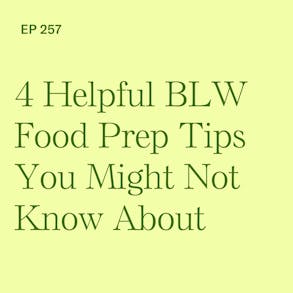
LISTEN TO THIS EPISODE
Episode Description
It is not your job to make your baby eat…but you are responsible for what the baby eats, when they eat and where they eat. This is Ellyn Satter’s Division of Responsibility in Feeding Theory in practice - but what if you’re not sure exactly WHAT the baby should be eating?
In this episode we’re looking at 4 super simple BLW food prep tips that will make your JOB of making safe foods for your baby a little easier to swallow. From how to soften fruits that aren’t yet ripe enough to making meat safe for babies to eat, listen to learn 4 easy ideas for making foods safe for your baby to eat with baby-led weaning.
Links from this Episode
- Baby-Led Weaning with Katie Ferraro program with the 100 First Foods™ Daily Meal Plan, join here: https://babyledweaning.co/program
- Baby-Led Weaning for Beginners free online workshop with 100 First Foods™ list to all attendees, register here: https://babyledweaning.co/baby-led-weaning-for-beginners
Other Episodes Related to This Topic
- Episode 209 - Fruit Vacation: How to Help Babies Who Overly Favor Fruit
- Episode 155 - Bitter Vegetables: How to Safely Offer Bitter Vegetables for Baby-Led Weaning
- Episode 177 - Red Meat Your Baby Can Safely Eat
- Episode 178 - White Meat Your Baby Can Safely Eat

Latest Episodes
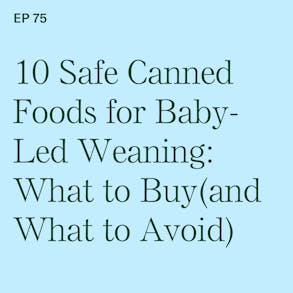

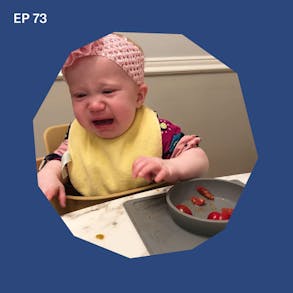
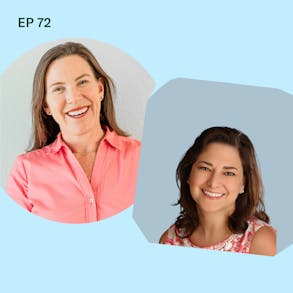
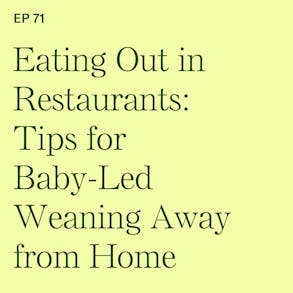
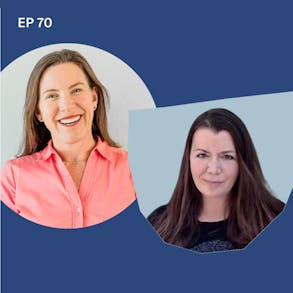
Katie Ferraro (0s):
All right. Quick pulse check. Are you feeling okay about baby Led Weaning a little nervous about this transition? Are you maybe interested in BLW but not entirely sure if this is the approach for you or maybe you started baby Led weaning, but you're feeling stuck or you're going to give up. Cause you're not sure if you're doing this right. Don't give up. I have a brand new one hour comprehensive online video training for you called Baby Led Weaning for BEGINNERS. It's totally free. And I think it's going to ease a lot of anxiety for you. I just redid this free training. It's packed with videos and visuals on how to safely prepare BLW Foods and what the first few days looks like and how to reduce choking risk. Plus everyone on this free workshop gets a copy of my 100 FIRST FOODS LIST.
Katie Ferraro (41s):
So you'll never run out of ideas about what to feed your baby next. You can get signed up for this weeks video workshop times at BABYLEDWEANING.CO. If you've got one hour to dedicate to learning about BLW, this is the training for you. Babyledweaning.co has this week's workshop times. And don't forget you also get that hundred FIRST FOODS LIST from this free training. And I hope to see you there. And so the tip about the meat is that, you know, Babies can eat soft shreddable strips of meat. I always say, if you can shred them meat between your fingers and your thumb, then it's safe for the baby to eat with their gums, but not all cuts of meat fit the bill. Hey, there I'm Katie Ferraro, Registered Dietitian, college nutrition professor, and mom of seven specializing in baby LED WEANING here on the baby Led Weaning Made Easy podcast.
Katie Ferraro (1m 26s):
I help you strip out all of the noise and nonsense about feeding, leaving you with the competence and knowledge. You need to give your baby a safe start to solid foods using baby LED WEANING. Hey guys, welcome back today. I've got four helpful baby led weaning tips that you may not know about. And this episode kind of came together because I was recently working with a brand new baby, baby Brayden. We started her baby LED WEANING experience when she was six months plus two weeks old, she was sitting up on her own. Mom is a friend of mine from preschool in my neighborhood, and she had done not Baby Led Weaning with her first baby. And she's like, I'm interested in this for my second baby, baby Brayden.
Katie Ferraro (2m 7s):
So we got started and it was very slow. If you guys follow me on Instagram at baby led wean team documented all opf baby Brayden's first 10 days. And like a lot of babies, she just really did not take to feeding herself solid foods for the first couple of days. And that's very, very difficult. We're about now in real time, I'm about a month out from when we started with her, she's still just now starting to reach for the foods. We were kind of putting them in her hand for at the beginning. She really loves the preloaded spoon, but this baby had a very typical, slow start to solid foods. And I know sometimes when that happens, parents will say, well, gosh, what am I doing wrong? And it's not your job to make your baby eat. If you've been listening to the podcast for a while, or you've been taking any of my courses, you know that we have our own jobs in feeding.
Katie Ferraro (2m 53s):
And if we follow Ellyn, Satter's Division of Responsibility in Feeding Theory, we as parents are responsible for what the baby eats and when they eat and where they eat. But ultimately our baby is responsible for how much or even whether they eat. So whenever you're feeling pressure, I'm like, gosh, my baby's not eating. I'm not doing this, right. Remember, it's not your job to make your baby eat. But if we look at our jobs, what the baby eats when they eat and where they eat, there's some little tweaks that we can make there to ensure success, or at least set our babies up for success and make sure we're doing our job and kind of holding up our end of the bargain in feeding. So here are four helpful tips about food preparation that can maybe help you do your job about what your baby is. Eating tip number one, poaching fruit. If your fruit is not soft enough to be offering it to babies.
Katie Ferraro (3m 34s):
So we talk about offering foods about the size of your adult pinky finger strips that babies can pick up and feed to themselves. They need to be soft and pass what some people call the squish test, where you squish it between your forefinger and your thumb. There's a little bit of give. Mango for example, if you sometimes buy the mango from Costco, because I hate cutting mango myself, and it's never soft enough, it's super rock hard. If it snaps or it breaks, it makes a crunching noise, crunchy, crispy, hard raw foods like that. We do not offer those to early eaters. You can drop that in a little bit of water, poach it until it's fork tender. Cool it and offer that nice soft strip of fruit to your baby. I just did this with baby Braden. We started with melon. You know, you buy a melon, you don't know what you're going to get inside of there. Right? And then she was coming over to eat melon and the melon wasn't ripe yet.
Katie Ferraro (4m 17s):
I wasn't going to wait four days to feed her melon and not let her eat anything else. If we're doing melon that day, I could just cut the melon into strips. Poach them, make them for a tender, make a nice, soft little cooked melon strip. We cooked vegetables all the time. A lot of times we forget about the benefits of cooking fruit in order to make it soft. Also releases some of that fructose, the naturally occurring fruit sugar. It makes it even a little bit sweeter through the cooking process. And that's perfectly fine for your baby to have. So any fruit I've done this with plums, I've done it with peaches, I've done with pretty much any fruit on the a hundred FIRST FOODS LIST. I have a list of a hundred different foods your baby can eat before one and 20 of them are fruit foods. And a lot of times we ended up just poaching them to make them soft for the baby to eat.
Katie Ferraro (4m 56s):
If you want to grab a copy of that a hundred FIRST FOODS LIST, I give it away for free to everybody on my online video training workshop called BABY LED WEANING FOR BEGINNERS. You can sign up for this week's workshop times and grab your copy of the a hundred FIRST FOODS LIST. If you go to babyledweaning.co. So tip number one is to poach the fruit that helps you kind of get through the fruitless. Another one is making porridge for the whole grains. Okay? There's a starchy foods category of the a hundred FIRST FOODS, and parents are always like "Katie I love the idea of feeding carbohydrate foods beyond pasta, potatoes, and rice to my baby. But all these wacky whole grains on your a hundred FIRST FOODS LIST are driving me crazy. Cause I don't know how to make them" a lot of these foods like farro and buckwheat and sorghum.
Katie Ferraro (5m 38s):
They work well as porridges and inside of my courses, I can teach you how to make all of them into baby LED WEANING like cereals, essentially that you can offer off of a pre-loaded spoon. But for every one of those whole grains, not everyone, I've tried a few that have failed, but for a lot of them and I'll give you a perfect example. Buckwheat is a really good one. When the buckwheat cereal kind of cools down a little bit and gets lukewarm, we end up with a nice kind of gelatinous consistency. It's still safe for the baby to swallow, but you can then form it into little logs. I'm working out a better name for it. My intern was like, you need to stop calling them whole grain logs. It doesn't sound appealing. It doesn't.
Katie Ferraro (6m 18s):
Basically you form the cooldown cereal in strips about the size of your adult pinky finger. And you offer those trips to the baby who can then pick it up and feed it to themselves. So for baby Brayden, I just did this with freekeh. It's a whole grain that we made into a porridge like cereal, but when it cools down, offered into the little logs and she could kind of pick it up, we could at least put it in her hands and she could try to eat it that way. It's also just a much more efficient way to offer whole grains because of course like little tiny, tiny pieces of food Babies can pick those up by themselves. So tip number two, make those whole grains in two, porridges that in turn, when they cool, you can offer into little pieces about the size of your finger that the baby can pick up and feed to themselves. The next tip is regarding meat. I know the protein foods can freak parents out.
Katie Ferraro (6m 59s):
And when it comes to meat, I always say, if you can shred the meat between your finger and your thumb, then it's safe for your baby to eat with their gums. And we do not offer solid pieces of meat to babies, like pieces of steak or pieces of pork chop. If you can't shred those with your finger and your thumb, it is not safe for your baby to eat with their gums. And if you're kind of new to the idea of offering your baby meat, I'm always an advocate of if your family eats animal products and it's safe for your baby to eat those as well. You just need to know a little bit about some safe food preparation methods. So if you want to learn more about choosing the fattier cuts of meat and how to safely prepare them, especially when it comes to beef and pork, I don't feed steak and I don't feed pork chops, but there are many other cuts of beef and pork that are safe for babies to eat.
Katie Ferraro (7m 43s):
Go and listen to the episode called "Red Meat Your Baby Can Safely Eat" that's episode number 177. And then an episode 178. I share more about "White Meat Your Baby Can Safely Eat" again, working towards those soft shreddable strips of me. Babies can safely eat those. We just did rib meat with baby Brayden on day four. And she did wonderful with this. This is only her fourth day of eating and yet she was holding in her hand. She was sucking it. She was enjoying the taste, but I also was sharing inside of the content there, how to puree it and offer it out of a preloaded spoon, how to puree and offer it out of an open cup. There, lots of wonderful things you can do to get your baby that nutrition from meat. Final tip is when it comes to vegetables.
Katie Ferraro (8m 25s):
Okay? A lot of times parents will be like, oh my baby only likes fruit Katie. Well, if you only offer fruit, your baby's only ever going to eat fruit. I want to remind you to offer as many vegetable servings per week as you do fruit. Okay. I've got 20 vegetables on the a hundred FIRST FOODS LIST and 20 fruits. And each week we do one new fruit on Monday, a new vegetable on Tuesday, starchy food on Wednesday, protein food on Thursday, allergenic food on Friday. Again, if you stay moving through that rotation, you'll always have as many vegetable offerings for your baby as you do fruit. And that's very, very important, especially when you're in that very crucial flavor window, this period of time where babies will like and accept a wide variety of foods and flavors and tastes and textures, it doesn't stick around forever.
Katie Ferraro (9m 8s):
Okay? And so we really need to hit that baby hard when they're willing to pick up these foods and bring them to their mouth and try some of those more bitter vegetables or the dark green leafy vegetables. I have a whole episode about bitter vegetables and how to safely offer those to baby that's episode 155. So don't be shy about doing vegetables and don't be shy about taking a break from fruit. If you find your baby preferentially going for that fruit, I often encourage parents to take what I call a Fruit Vacation. Take a break from fruit. You don't have to offer fruit every day. You don't have to offer fruit every meal. Okay so I have a whole episode called "Fruit Vacation", this concept I've kinda coined about how to take a break from fruit or help babies who overly favor fruit.
Katie Ferraro (9m 54s):
The Fruit Vacation episode is number 209. So hope you guys have a couple of tips there now for moving forward again, poaching fruit to make it soft, making porridge out of the whole grain that you then offer off of a preloaded spoon. And you can turn it into little logs that your baby can sell feed shredding meat and Offering fatty cuts of soft shreddable strips of meat. The babies can self feed and then offering as many vegetable servings as you do fruits. Again, grab that a hundred FIRST FOODS LIST. If you need more ideas about foods, your baby can safely eat. That's free for everyone on my one hour online video training workshop called BABY LED WEANING FOR BEGINNERS. If you haven't taken this workshop yet, I've just redone it. It is so helpful for parents who like have maybe been dabbling in baby led weaning, but you really haven't cracked the code with it yet.
Katie Ferraro (10m 36s):
Or you just want to see what it's supposed to look like. I know we're on a podcast where we're learning through our ears, but sometimes seeing really is believing, especially with baby LED WEANING that training baby LED WEANING FOR BEGINNERS is available to you at babyledweaning.co. Thanks so much for listening and I'll see you guys next time.
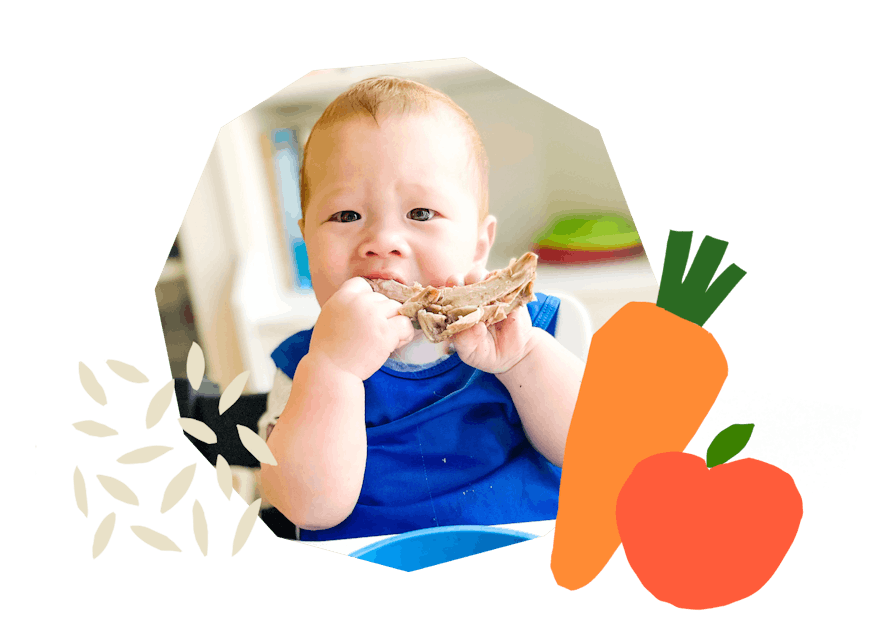
The Program Baby-Led Weaning with Katie Ferraro
A step-by-step digital program for starting solid foods safely and navigating the original 100 FIRST FOODS™ meal plan with baby-led weaning.
 EXPERT-LED, PROVEN APPROACH TO EATING REAL FOOD
EXPERT-LED, PROVEN APPROACH TO EATING REAL FOOD CONCISE VIDEO TRAININGS TO MASTER BABY-LED WEANING
CONCISE VIDEO TRAININGS TO MASTER BABY-LED WEANING 100 FIRST FOODS DAILY MEAL PLAN WITH FOOD PREP VIDEOS
100 FIRST FOODS DAILY MEAL PLAN WITH FOOD PREP VIDEOS
Baby-Led Weaning for Beginners Free Workshop
Is your baby ready to start solid foods, but you’re not sure where to start? Get ready to give your baby a solid foundation to a lifetime of loving real food…even if you’re feeling overwhelmed or confused about this next stage of infant feeding.
Get baby-led weaning recipes and tips delivered to your email inbox.

